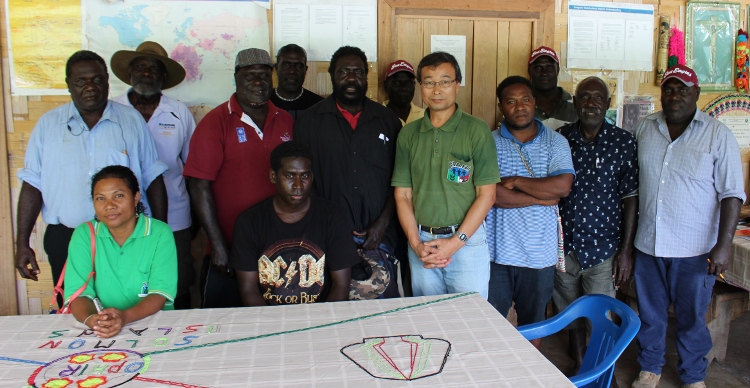Restoring soil productivity in Panguna by phytoremediation
Heavy metal effluents from the mining activity in Panguna have polluted lands along the Jaba River. The pollution is also affecting health of the residents, who use the lands to grow plants on the contaminated soils. Removing the pollutants from the soils is prohibitively expensive involving physical removal of the polluted soils and replacing them with introduced materials. We therefore decided to use the eco-friendly and cost-effective technology termed phytoremediation.

This technology depends on the group of plants that can accumulate a large amount of heavy metals in their tissues without affecting their normal physiology. These plants are called hyperaccumulators. The plants are adapted to extreme environments where high levels of heavy metals are found. Such environments include mines. The advantage of such plants is, in an evolutionary sense, that they can take advantage of the niche environment where no other plant can survive. Hundreds of hyperaccumulators have been reported. Many ferns are known to be excellent hyperaccumulators. In fact a fern species called Pteris vittata L. can accumulate large amounts of arsenic and the plant has been even commercialized for soil remediation.
An ideal plant for phytoremediation would have a well-developed root system so that it can absorb a large amount of heavy metal ions, and have a large shoot biomass for storage. It should have an ability to efficiently translocate the absorbed metals from roots to shoots.
The quantification of the heavy metal content in the plant tissues can be achieved by a technology called ICP (inductively coupled plasma spectroscopy). The ICP can quantify the concentration of elements in samples to the ppm (parts per million) or ppb (parts per billion) level.
In Papua New Guinea, phytoremediation was used in the past to clean up the mine pollutions in Namie Mine in Morobe Province. The phytoremediation project in Panguna was conceived by the PAA founder during the first phase of the Bougainville sago project, when he saw the destruction of environments in Panguna and along the Jaba River. The project was funded for the 2014-2016 period by The Christensen Fund.

So far, we have identified several potential hyperaccumulators of arsenic from Panguna area. Plants to accumulate other heavy metals such as mercury, cadmium, and lead will be also identified in coming years. These plants will be used to clean up soils in selected garden locations.
